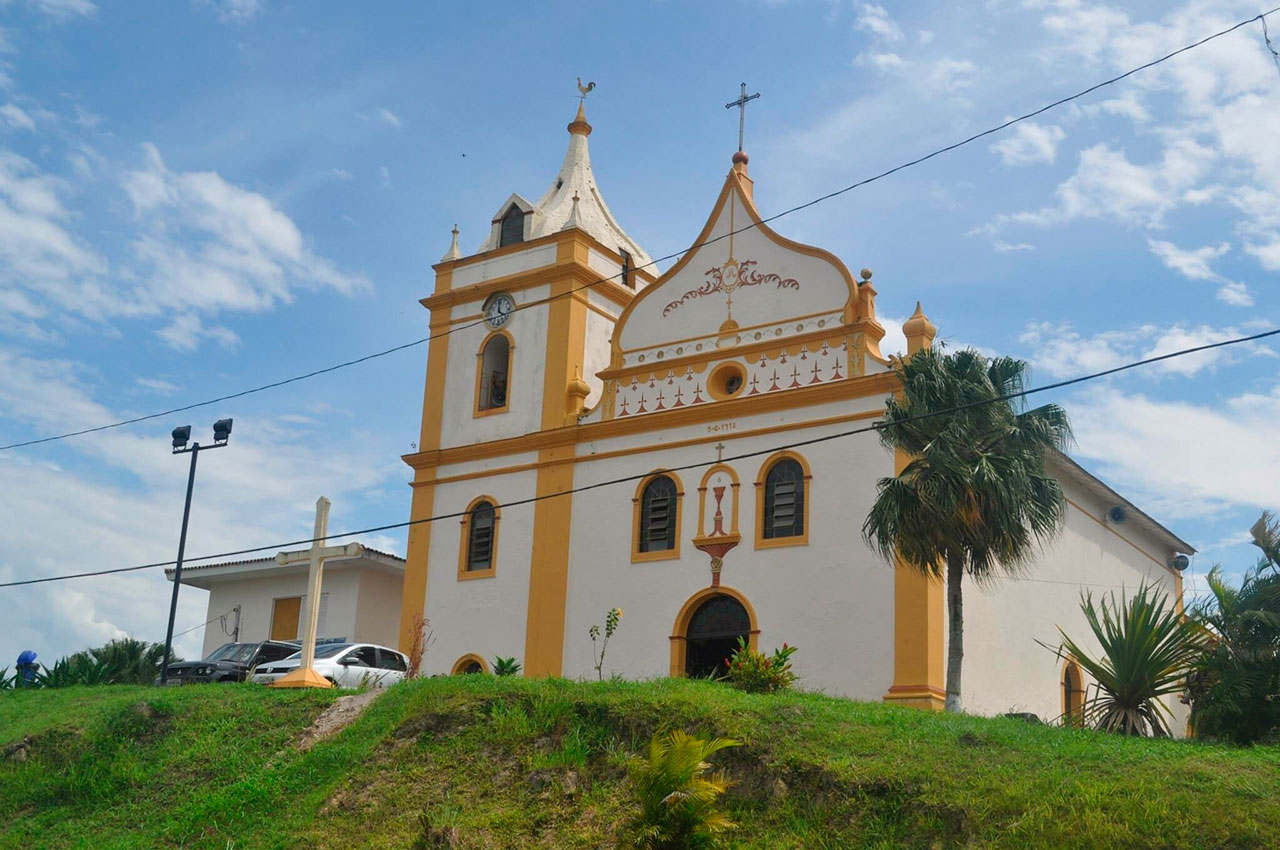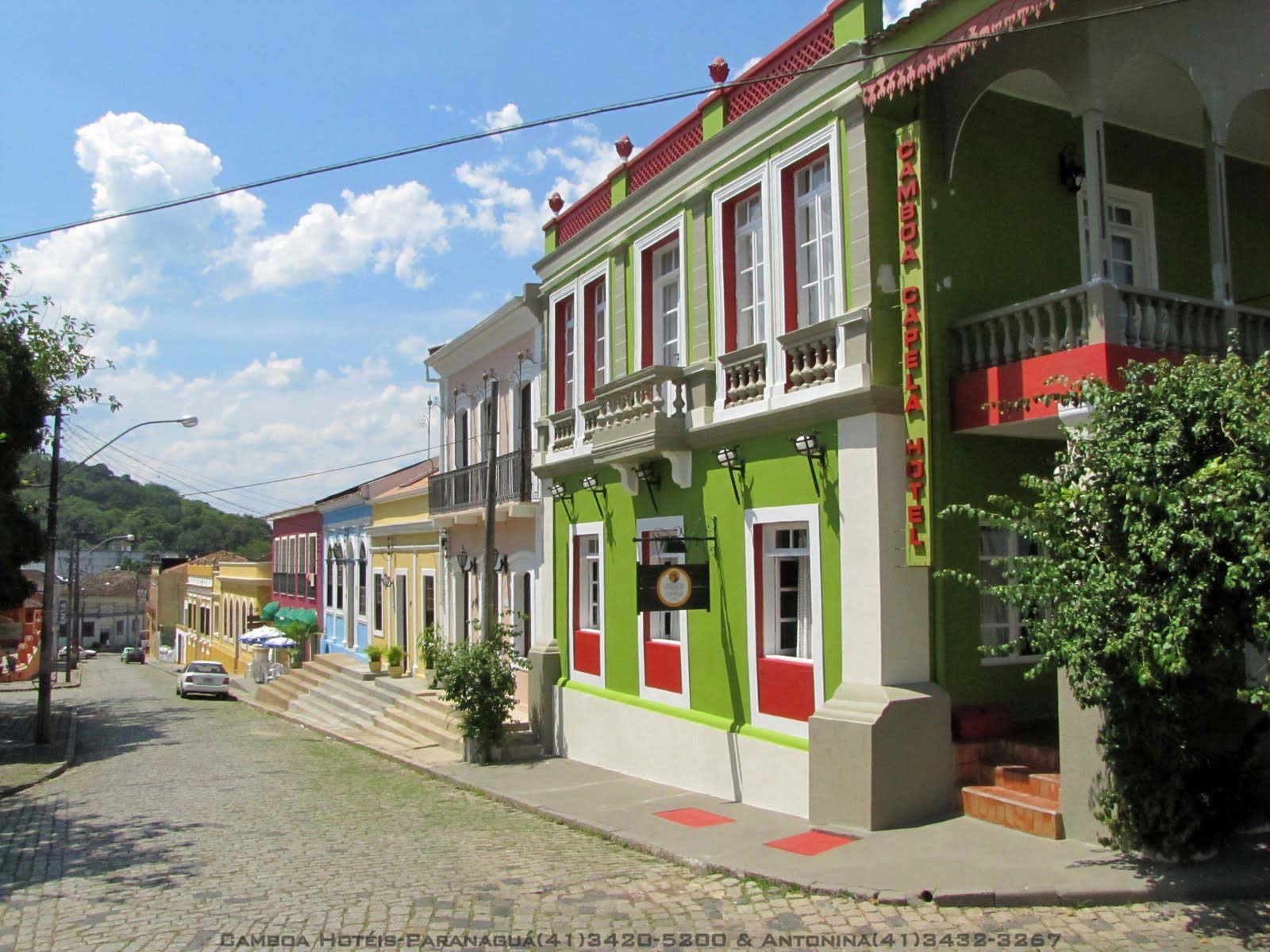


About
The Historical Center
With several buildings with Brazilian colonial, eclectic and art-deco characteristics. Its historical importance is linked to the so-called “first gold cycle in Brazil”, prior to exploration in Minas Gerais, and due to its historical and scenic values, it was declared national heritage by the IPHAN (National Historical and Anthropological Heritage Institute) in 2012.
Learn about some attractions of our Historical Center

Trapiche Municipal
The municipal pier at Feira Mar square overlooks the entire bay of Antonina, as well as views of the islands, the mangrove swamp, and is an ideal place for birdwatching. Also used for boat tours, fishing and serving the riverside population.

Train Station
Built in 1916, the Railway Station was the railway terminal of the Morretes – Antonina Line and is a living example of the golden age of yerba mate, when Antonina stood out as the 4th Brazilian port. Today is from where the oldest Maria Fumaça steam locomotive in operation in Brazil depart for its tours.

Church of Bom Jesus do Saivá
Historical monument of the 18th century, its construction began when the wife of the Captain-Major of the city, Manoel José Alves, promised to build a chapel dedicated to the worship of Senhor Bom Jesus if she obtained the grace to be cured of a serious illness.

Feira-Mar Square
Pleasant place to feel the sea breeze and where you can see the beautiful bay of Antonina and its shallows, its traditional and motorized boats, besides the blue mountains that outline the sea. From this place you have access to the pier, from where you can depart for specialized boat trips around the bay.

Mirante do Valente (Viewpoint)
Located in front of the Nossa Senhora do Pilar Sanctuary, from Mirante do Valente you may have a beautiful partial view of the bay, including the Barão de Teffé port, the municipal pier and some ruins of old buildings.

Filarmônica Antoninense
Founded in 1975, the Filarmônica Antoninense marching band enchants everyone wherever it goes, giving a show of joy and spirituality. With a large repertoire, it has already made more than 1300 presentations in several Brazilian states.

Macedo Warehouse
The buildings of the Macedo warehouse are part of one of the most beautiful postcards of the Bay of Antonina and date back to the heyday of the city's economy, when they served as a yerba mate deposit for the Macedo family.

Caiçara Train - Maria Fumaça
Manufactured in 1884 by Baldwin Locomotive Works, the Mogul 11 steam locomotive is currently the oldest steam locomotive in regular operation in Brazil, and the only one in Paraná.

City Hall
In an eclectic style, the building that serves as the seat of the City Hall was one of the most important residences of the 19th century. Built at the end of the 19th century by Colonel Líbero Guimarães, a wealthy yerba mate exporter who was mayor of the city.

City Council Palace (former Ypiranga Club)
The former registered office of a 1930s Antonina football association - Ypiranga Football Club - is now the seat of the Antonina City Council.

Nossa Senhora do Pilar Sanctuary
The three-hundred-year-old Church is a fundamental landmark in the history of Antonina: the foundation of the city in 1719. Located on a beautiful hill over the banks of the bay, from where you have a privileged view of the city and its exuberant natural wealth.

St. Benedict Church
Built in 1824, its colonial characteristics were changed without observing restoration norms. As per the tradition, this church was a religious refuge for slaves who saw in the miraculous Saint their protector against the persecution of the white man.

Municipal Theater
Built in the second half of the 19th century, the Theatro was the stage for a major event on April 24, 1933, when there was a benefit show that featured famous brazilian names such as Procópio Ferreira, Sílvio Caldas, Luís Barbosa, Aracy de Almeida, Carmen Miranda and the conductor Ary Barroso.

Pharmacia Internacional
It is a century-aged landmark for Antonina. Listed as a historic heritage site, it keeps about 3,000 old objects, including bottles, equipment and old medicines, in addition to the original furniture from the 1930s. Medicines, herbs and perfumes can also be purchased in this museum.

Municipal Market
Great spot to taste the city's gastronomy, buy fish or handicrafts. Here, you can taste delicious dishes with a panoramic view of the beautiful bay of Antonina, enjoying the show of aquatic birds and the back and forth of artisanal fishermen's canoes.

Palace of Pousada Atlante
Built in the 1910s by Manoel Mendes Cordeiro, in honor of his wife Leonor Whiters Cordeiro, whose initials stand out, carved in several doors of the property.

Colonel Macedo Square
Previously named as Republica Square, it has in its surroundings several monuments that emphasize the splendor of the yerba mate cycle. The bandstand, the fountain and some rare trees, such as two camphor trees, besides the bronze bust and the testament letter of president Getúlio Vargas.

Carioca Fountain
The only water supply of the city from 1867 to the end of the 1930s, the Carioca Fountain was visited by the Emperor D. Pedro II in 1880, who drank its fresh and crystal-clear water. According to tradition, whoever drinks that water will return or stay in the city.
Talk to the Antonina's
Tourist Department

Copyrights 2021,
All rights reserved.
